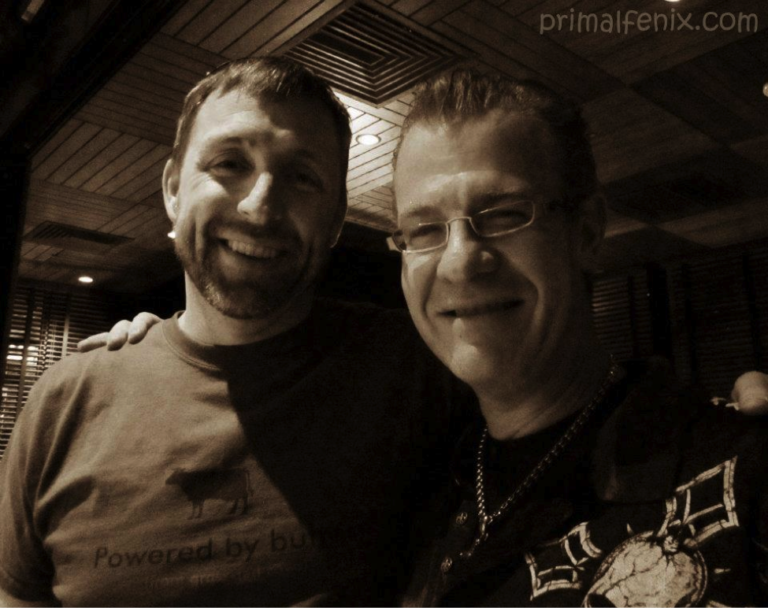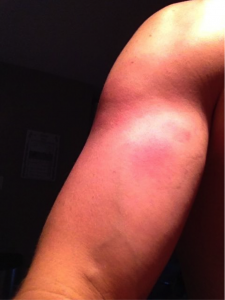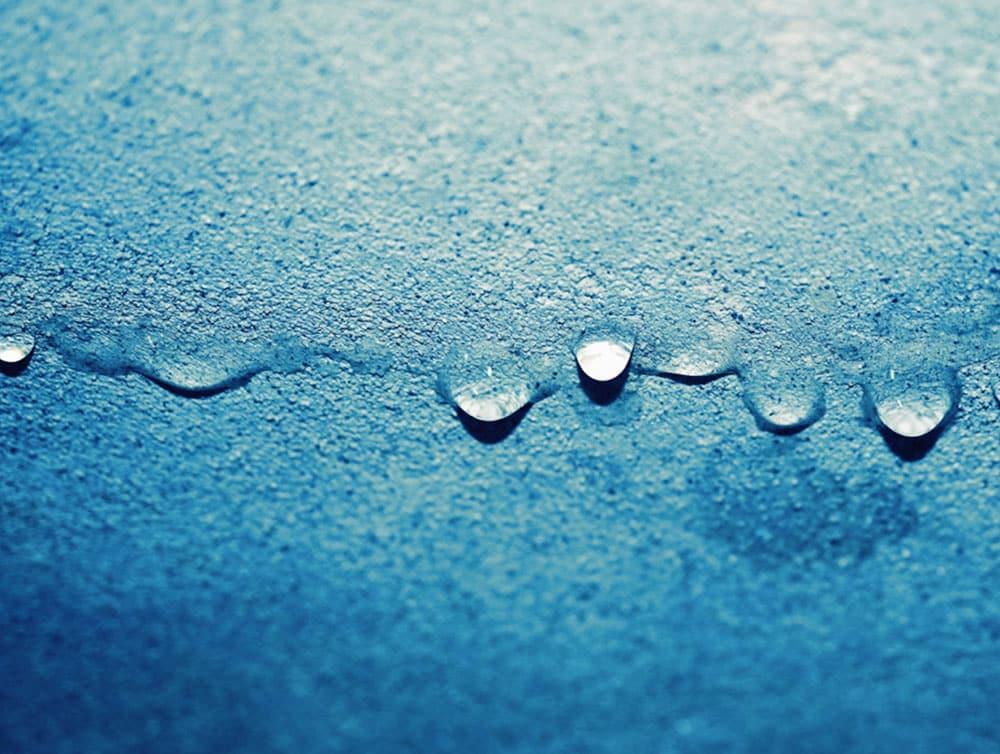
There is a lot of buzz lately about Dr. Jack Kruse’s biohacking experiments using ice baths to induce cold thermogenesis. This is an intriguing and powerful type of biohack, one we’re still learning about.
My first experience with cold thermogenesis coincided with my exposure to yak butter tea, which led to the creation of Bulletproof Coffee. On a high altitude trekking trip in the Himalayas near Mt. Kailash, the temperature was -10 F and there were 20 mph winds. It was so cold my insulated water bladder drinking system froze to slush.
I was traveling with a porter, a young guy about half my size. He wore a thin leather jacket, a t-shirt, jeans, and tennis shoes. Nothing else.
While showing off for a cute Australian girl, the porter stepped through ice into freezing water up to his groin. We were miles from a road and there were only maybe 10 people within a day’s walking distance. I was worried about him getting hypothermia, so I handed him an extra down jacket I’d brought.
This uberman took the jacket I thought might save his life and stuffed it into his pack, thinking I was asking him to carry it for me. All I could think was, “WTF?” so I gestured to him to put it on. He smiled and said, “It’s not very cold.”
I watched other guys like him who were half my weight but could carry twice what I could, and do it all day long. I watched the porter survive on nothing more than yak butter tea and a little roasted barley flour.
I figured I was dealing with a race of Bulletproof genetic freaks, the Sherpas. But the reality is that I had no appreciation for how the human body responds to cold. At the time, all I could think of was getting warm by drinking some yak butter tea, but little did I know cold exposure might turn out to be a biohack in the future.
You can read the full story of how Bulletproof Coffee got started here, but the rest of this post is about how to make yourself Bulletproof with cold thermogenesis (and how not to do it).
After reading Jack Kruse’s articles on cold thermogenesis, talking on the phone with him the night before he had elective surgery using only ice to recover, I decided to give a few cold thermogenesis protocols a try.
My previous attempts at cold exposure were not fruitful. Tim Ferriss’s neck ice packs didn’t produce any reduction in inflammation I could feel, and no change in fat, but they work for some. (his advanced protocols call for drinking ice water, cold showers, and then ice baths.) Cold showers a la Tim didn’t work for me even after the neck packs; cold showers tended to be so shocking that I felt awful after them for hours. One time it even induced a double heart beat, which is uncomfortable but not dangerous. (It helps to have an ER doctor for a wife though…).
If you don’t know what cold thermogenesis is, there are a variety of articles listed below for you to read. Follow safe protocols! You should listen to our interview with exercise scientist Dr. Tim Noakes where we talk about adaptive thermogenesis to cold.
Safe cold thermogenesis protocols involve gradually increasing exposure to cold over time so that you can overcome your dive reflex. You start with putting your face in cold water, then using ice packs, then sitting in an ice bath for almost an hour. Read on to see what happened when I skipped steps.
Research on Cold Thermogenesis
Here is our interview with Dr. Tim Noakes. In the interview, Dr. Noakes talks about working with a swimmer who was training to swim in the Arctic Ocean. Dr. Noakes had the athlete spending large amounts of time in an ice-cold water tank to prepare for the swim. After several weeks of training, the athlete would start sweating half an hour before entering the water. His body was adapting to the cold by massively increasing heat production (thermogenesis). However, you don’t have to be a world-class swimmer to benefit from cold thermogenesis.
There is some interesting research behind cold exposure that suggests it can improve thyroid function, cause fat loss, and increase overall resilience.
A study in rats found that cold exposure revamped thyroid function and increased BAT oxygen consumption by 450%.
One study in humans found that cold exposure can increase energy expenditure, and may assist in fat loss.
Another study found that adult humans have more brown adipose tissue (BAT) than previously thought. BAT can significantly increase energy expenditure in response to cold.
Doctors use cold exposure with patients to increase leptin sensitivity, boost strength, speed wound healing, and cause fat loss. Sounds good to me.
I did the thermogenesis protocol for 2 weeks without a problem. I started by plunging my face into ice water for about 5-10 minutes at a time. You’re supposed to do this for about 30 days to teach your body not to over-react to ice exposure. I felt noticeably better sleep (sadly, not monitored with Sleep Cycle) and more energy.
The next step, one I was supposed to start after 2 more weeks of face freezing, is to pack ice around my body while wearing a compression shirt for 30-45 minutes each session. The shirt is there to prevent blood from rushing in and causing bruising after the ice is removed.
Unfortunately, I was staying in a nice hotel in NYC for a Cloud Computing conference. It was so nice; they decided not to install sinks or tubs. Instead, they had one of those shallow stainless steel hand sinks and a walk in shower. Don’t get me wrong, it was a nice hotel, but it was a little fancier than the traditional cold thermogenesis protocol would allow for. I also hadn’t brought a compression shirt since I wasn’t ready to use one with cold thermogenesis.
Being a biohacker, I decided to carry on with the protocol no matter what. The hotel didn’t have an ice machine, so I called the front desk and had several buckets of ice delivered to the room. Then I did the following:
- Packed the ice into plastic ziplock bags.
- Laid down on the bed.
- Placed the ice across my chest, abs, and shoulders.
- Relaxed and tried not think about the cold.
After 5 minutes, I felt great. No shivering at all. But it was late at night and I dozed off. About 45 minutes later, I woke up and removed the ice, then went to bed.
When I woke up, something was wrong. I was in pain. About 15% of my body felt like it had been beaten with heavy sticks.
The following day, every spot of my body covered by an ice pack was red and puffy. It looked like I’d been beaten with sticks. I had left the ice packs on my body far too long – to the point where I had (according to my ER doctor wife) first degree burns over 15% of my body.

Oops.
This is a real life situation where biohacking went wrong. It’s taken me weeks to recover and my last round of blood tests still show higher inflammation (C reactive protein or CRP) as a result. I also had to sleep 15% more to recover my energy. This is a major injury. It happened for several reasons:
- I didn’t bring a thermometer to measure my skin temperature.
- I didn’t have a compression shirt.
- I didn’t have a tub.
- I dozed a little with the ice packs still on me.
Basically, I didn’t follow the protocol I meant to follow.
Biohacking may seem like a risk free endeavor (besides getting blood drawn), but things can and do go wrong in ways you would never guess. When doing something with any kind of risk, you need to be prepared. Gather the right tools, prepare mentally, and be flexible.
As my emergency room doctor wife said when I returned home,
“Only you would go to NYC to present at a Cloud Computing conference and come back with frostbite.”
Don’t let it happen to you.









